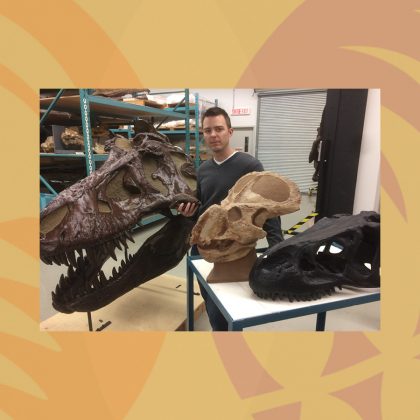Asymptomatic Transmission and the Case of Typhoid Mary
A spokesperson for the World Health Organization (WHO) recently referred to asymptomatic transmissions of COVID-19 as “very rare”. This raised a furious scientific debate, which led WHO to walk back its comments and clarify that people without symptoms can and do readily spread the virus. The Centers for Disease Control and Prevention has said that one in four people could be asymptomatic carriers of COVID-19.1
“Asymptomatic” refers to people who are infected by a disease, but never develop any symptoms.
The story of Mary Mallon is an infamous case of a healthy carrier of a disease.
In 1869, Mary Mallon was born in Cookstown, a small village in the north of Ireland. As a teenager, she immigrated to the United States to seek a new life in the New World. By 1900, Mary was a cook working in the houses of wealthy families in New York City.
Between 1900 and 1907 she cooked in the homes of several families, including the home of Charles Warren, a wealthy New York banker, and in every house people either fell sick or died of typhoid fever. Every time tragedy struck, she slipped away quietly and found work elsewhere.
The Warren family hired a sanitary engineer named George Soper to investigate. He initially thought that freshwater clams were the culprits for the disease, although he soon solved the mystery, identifying Mary as the first known asymptomatic case of typhoid fever or Salmonella typhi, an infectious form of salmonella that can cause fever, diarrhea, and death.2
Mr. Soper tracked down Mary to another house in Manhattan and explained his theory to her. She refused to believe she could be carrying a disease from which she never suffered herself. He attempted to obtain samples of her stool, urine, and blood, but Mary chased him out of her kitchen with a carving fork.
She would never show signs of the disease, but would never stop giving it to other people.
In 1907, Mary was exiled to Riverside Hospital on North Brother Island in the East River of New York, which was originally built to house people with smallpox. A newspaper campaign summoned popular support for her story. Mallon’s legend grew and she was dubbed “Typhoid Mary” by the press. She became the butt of jokes, cartoons, and eventually, medical dictionaries. The term stuck with her for the rest of her life.
Mary took legal action to protest her confinement, arguing that it was unjust to treat her as an outcast when she’d done nothing wrong. In 1909 a health commissioner granted Mary her freedom, in return for her promise that she wouldn’t work as a cook again.
Upon her release, Mary tried working as a laundry maid, but the work didn’t have the status and pay of the role of cook. She soon returned to cooking under the assumed name of “Mary Brown”, working in hotels, restaurants, and even taking a job in the kitchen of a maternity hospital, where dozens fell ill. In 1915, authorities tracked her down and again confined her to North Brother Island.
Immunization for typhoid fever was finally developed in 1911, while antibiotic treatment wasn’t available until 1948.3
Immune to the disease she carried, Mary is presumed to have caused an outbreak of typhoid fever in New York. She was responsible for the contamination of over 120 people, five of whom died, over the course of her career as a cook, because typhoid fever is spread through water and food. Her signature dish was peach ice cream, and the typhoid bacterium can live in cold food, but is destroyed by cooking.
Mary’s name became synonymous with the spread of the disease, although there were other healthy typhoid carriers, including Italian immigrant Tony Labella, who is presumed to have caused over 100 cases, including 5 deaths, however, we don’t remember him as Typhoid Tony.
In the name of public safety, Mary spent the next 23 years in forced quarantine until her death in 1938. However, by this time, hundreds of other asymptomatic carriers had been identified, but were free to walk the streets of New York. Mary was stubborn, but health officials never worked with her to help her understand that she was a risk factor. Mary was the victim of prejudice, as the first proven asymptomatic case of typhoid fever, and as a poor female Irish immigrant.
Over a century later, her name is still infamous, and Typhoid Mary has broadened as a colloquial term for anyone who, knowingly or not, spreads a contagious disease. In light of the current pandemic, #TyphoidMary has also become a hashtag on social media.
Read about Typhoid Mary and more in Karen Stollznow’s forthcoming book, “On the Offensive: Prejudice in Language Past and Present.”
Notes
- Whitehead, Sam. 2020. CDC Director On Models For The Months To Come: “This Virus Is Going To Be With Us”. NPR. https://www.npr.org/sections/health-shots/2020/03/31/824155179/cdc-director-on-models-for-the-months-to-come-this-virus-is-going-to-be-with-us
- Marineli, F., Tsoucalas, G., Karamanou, M., & Androutsos, G. 2013. Mary Mallon (1869-1938) and the history of typhoid fever. Annals of gastroenterology, 26(2), 132–134.
- Marr, John. 1999. Typhoid Mary. The Lancet. Volume 353, Issue 9165.









